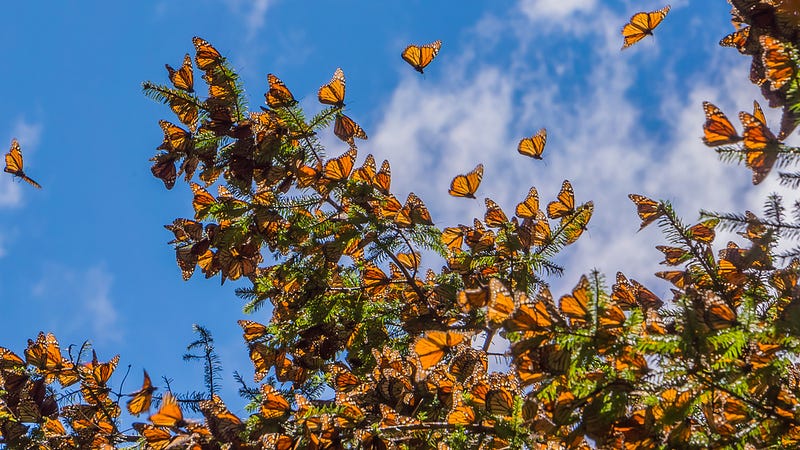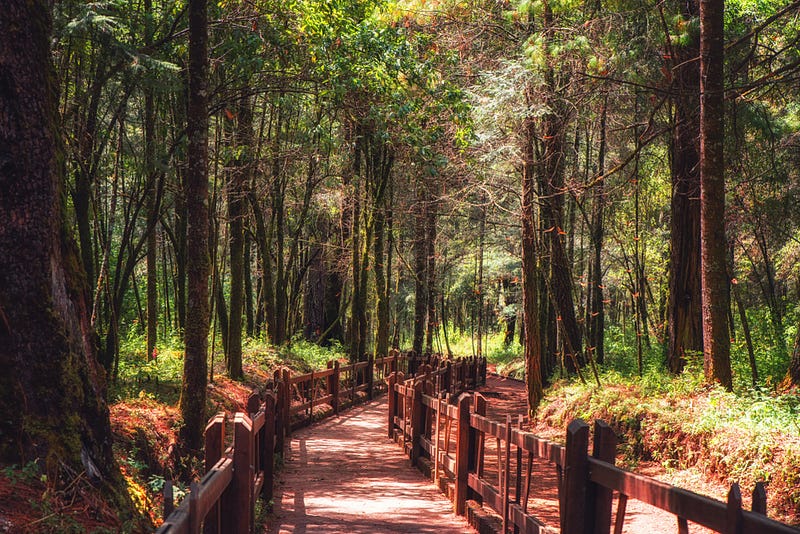Strategies for Monarch Butterfly Conservation: Preventing Extinction
Written on
Understanding Monarch Butterfly Extinction
The ongoing threat of species extinction is a pressing concern, with many plants and animals facing the possibility of disappearing. While certain species have been lost for years, others are on the brink of extinction, leaving us with a glimmer of hope for those that still survive. Coexisting with diverse species is crucial, as each contributes significantly to the health of our ecosystems.
One species that is particularly vulnerable is the monarch butterfly. These striking insects can boast a wingspan of up to 10 cm (4 inches) and are renowned for their extensive migrations in search of food. Monarchs journey as far as 4,000 kilometers (approximately 2,485 miles) from regions in the north and central United States and southern Canada to their wintering grounds in central Mexico. Remarkably, this migration requires the efforts of three to five generations of butterflies each year!

The importance of this migration extends beyond the survival of monarchs; it also benefits the environment. As pollinators, monarch butterflies play a vital role by transferring pollen between plants while feeding on nectar. This process not only helps plants reproduce but also enhances genetic diversity, making them more adaptable to environmental changes. Unfortunately, these magnificent butterflies are currently endangered.
The monarch butterfly was officially classified as endangered in 2022, following a staggering population decline of 22% to 72% over the previous decade, with some areas experiencing a reduction of up to 80%. Key factors contributing to this decline include climate change, pollution, and loss of biodiversity. For instance:
- Climate Change: Increased temperatures in their summer breeding areas can delay migration by six days per decade, resulting in fewer butterflies reaching their winter habitats in Mexico.
- Pollution: The widespread use of pesticides diminishes food sources for migrating colonies.
- Biodiversity Loss: Habitat destruction reduces the availability of nectar-rich plants, jeopardizing the butterflies' survival.
To safeguard this vital species, it is essential to combat climate change, pollution, and biodiversity loss. Here are some strategies to help prevent the extinction of monarch butterflies:
Monitoring Programs
One effective approach to conserving monarch butterflies is through monitoring programs. These initiatives provide valuable data on the size and health of butterfly populations and their habitats.
The monarch overwinter monitoring program tracks the number and size of colonies occupying the forests in Mexico by mid-December, when all colonies have settled for the winter. Over the past decade, this program has revealed that monarchs formed between 7 and 14 colonies, occupying approximately 2.71 hectares (6.72 acres)—equivalent to about five football fields. However, a crucial aspect that remains unmeasured is the density of these colonies. Understanding the number of butterflies within each colony is vital for determining effective conservation actions.
In this video, you can observe the majestic monarch butterflies as they inhabit forests and witness the beauty of a butterfly colony without disturbance!
Additionally, the environmental health of the forests is assessed to prevent illegal logging. Between 2000 and 2012, illegal logging affected 2,179 hectares (5,384 acres), but this figure drastically decreased to just 13.4 hectares (33 acres) in 2021—a reduction from over 4,000 acres to about 25 football fields!
Sanctuaries
Establishing sanctuaries is another essential measure to protect monarch butterflies. These designated areas serve as nature reserves where monarchs can thrive in a suitable environment while providing opportunities for scientific research.
The monarch butterfly sanctuary in Mexico exemplifies the key elements of an effective sanctuary. Initially created in 1977, it aimed to safeguard the butterflies during winter months. However, this protection was limited due to unclear boundaries and seasonal constraints. In 1986, the Monarch Butterfly Biosphere Reserve was established, encompassing 16,110 hectares (about 40,000 acres) of protected land year-round. Unfortunately, local landowners were not adequately consulted, leading to a lack of community support and fragmented core zones.
In response to these challenges, a redesign of the protected area occurred in 1998, resulting in a well-defined sanctuary that is both scientifically sound and supported by local landowners. This newly expanded reserve now encompasses 56,259 hectares (around 139,000 acres) and features connected core zones.

Funding
Ongoing financial support is crucial for the success of sanctuaries and research initiatives aimed at monarch conservation. Continuous funding enables the maintenance of facilities and supports landowners in preserving forests that sustain monarch populations. For instance, landowners receive compensation for refraining from logging, which has led to increased participation—now 33 of 38 landowners are involved in preservation efforts.
Conclusion
As climate change, pollution, and biodiversity loss continue to threaten monarch butterflies, it is vital to implement strategies to protect them from extinction. We can contribute to their survival through monitoring initiatives, maintaining sanctuaries, and securing funding for conservation efforts.
Taking Action
Here are some practical steps you can take to help protect the monarch butterfly:
- Support local conservation initiatives by planting native species like milkweed to provide essential nutrients for monarchs.
- Share the significance and beauty of monarch butterflies within your community.
- Contribute to wildlife funds that support butterfly sanctuaries.
Additionally, addressing the root causes of monarch population decline is essential. You can make a difference by:
- Reducing energy consumption at home.
- Properly disposing of waste.
- Opting for reusable products over single-use items.
- Replacing traditional lawns with native plants.
About the Author
Dr. Erlijn van Genuchten is a globally recognized expert in environmental sustainability. As a science communicator, she empowers scientists in the fields of nature and sustainability to enhance the outreach of their findings, enabling everyone to apply scientific knowledge for a sustainable future. Dr. van Genuchten has inspired countless individuals worldwide, including her collaborations with the United Nations, her publication "A Guide to A Healthier Planet" through Springer Nature, and her social media contributions.
More about her book “A Guide to a Healthier Planet”
Invite Dr. Erlijn van Genuchten as a speaker
Science communication support
Credit
This article draws on the following scientific publications:
Al Baraj, D. H., & Ekrem, Ö. G. Ü. R. (2022). The Effect of Global Warming on Migration of Butterflies. Selcuk Journal of Agriculture and Food Sciences, 36(4), 79–82.
Rendón-Salinas, E., Alonso, A., García-Serrano, E., Valera-Bermejo, A., & Quesada, M. (2023). The monarch butterfly in Mexico: a conservation model. Current Opinion in Insect Science, 101112.